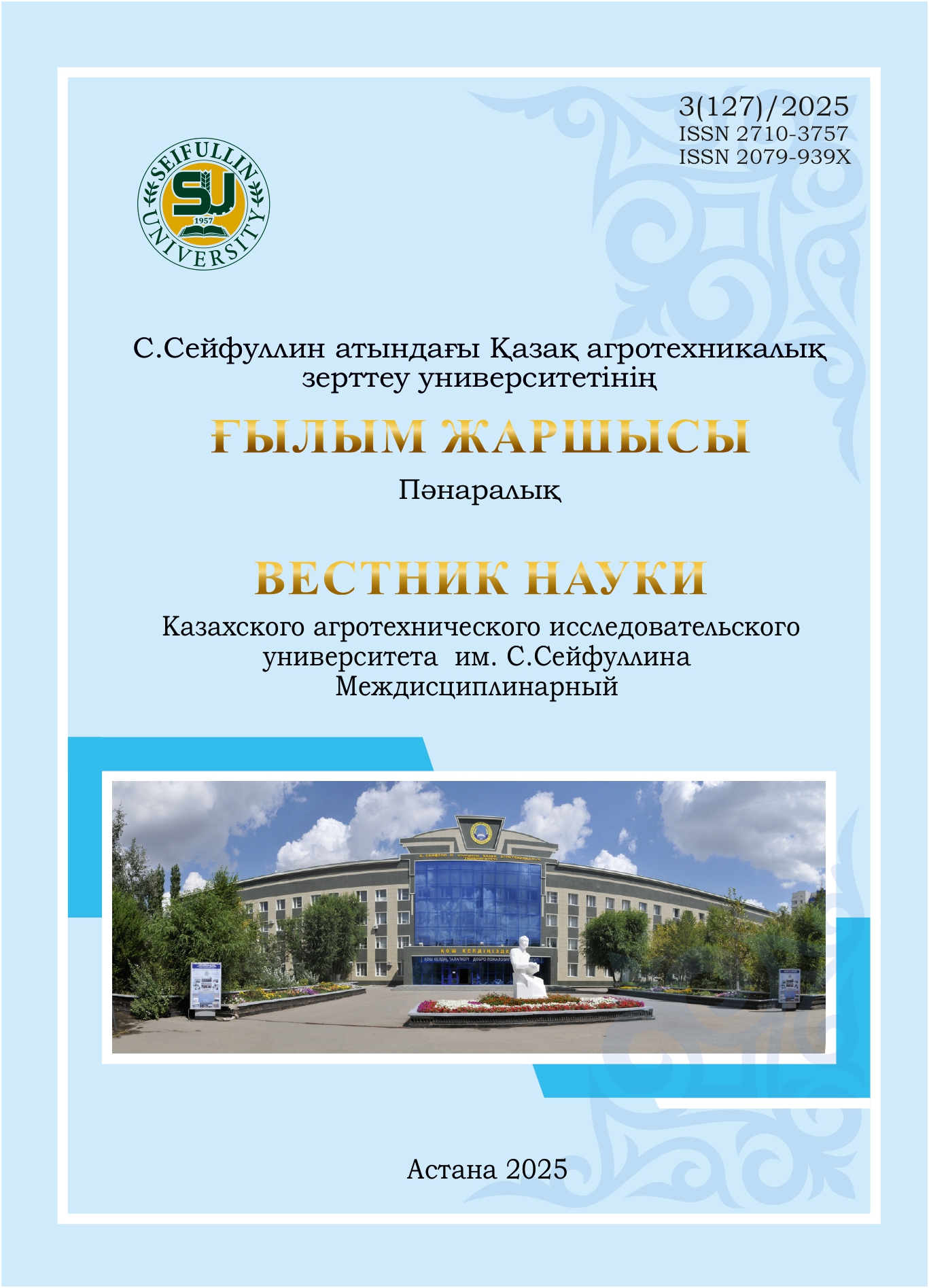The peculiarities of the distribution of locust pest populations in natural plant associations: A case study of two different agro-climatic zones of Kazakhstan
DOI:
https://doi.org/10.51452/kazatu.2025.3(127).2039Keywords:
harmful locusts; population; distribution; plant communities; agro-climatic zones.Abstract
Background and Aim. One of the most pressing issues is the study and clarification of the species composition, ratios, frequency and dominant species of harmful locusts found in various agro-climatic zones of Kazakhstan. This is crucial for identifying the most widespread and economically significant species, their specific distribution patterns, and preferred host plants. The aim of this research was to determine the distribution features, species ratio, frequency of occurrence, dominance and population dynamics of harmful locust species in different agro-climatic zones of Kazakhstan, in order to identify common and economically important species and their association with natural plant communities.
Materials and Methods. Two major agro-climatic zones in Kazakhstan were selected for comparison: the humid, moderately warm zone and slightly humid, moderately warm zone. Studies were carried out on species composition, abundance, occurrence, interspecific dominance and prevalence in plant associations using standard methods of plant protection and phytosanitary monitoring. GPS coordinates of all surveyed locations were recorded.
Results. Fifteen locust species were identified in the humid, moderately warm agro-climatic zone, and fourteen species were identified in the slightly humid, moderately warm agro-climatic zone of Kazakhstan. Calliptamus italicus was frequently found in both zones. In the humid, moderately warm agro-climatic zone, Paracryptera microptera microptera, Dociostaurus brevicollis, Dociostaurus kraussi, and Stenobothrus fischeri were classified as moderately common. In the slightly humid, moderately warm agro climatic zone, in addition to Calliptamus italicus, Oedaleus and Stenobothrus fischeri were common, while Chorthippus biguttulus was moderately common. Grain-wormwood and feather grass-grain plant communities were the most preferred habitats, harboring 19% of all identified locust pests. Additionally, mixed grass-fescue- feather grass and fescue-wheatgrass plant communities harbored 14% of the locust pests.
Conclusion. The data obtained on the distribution of locust pest populations in natural plant communities, based on these two different agro-climatic zones of Kazakhstan, contribute to the development of a digital map of locust pests distribution in Kazakhstan, and to the creation of predictive models for pest population forecasting.

